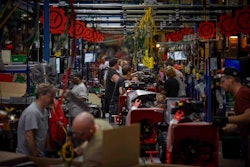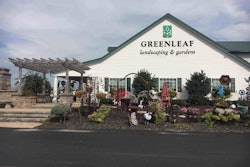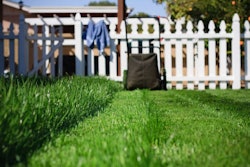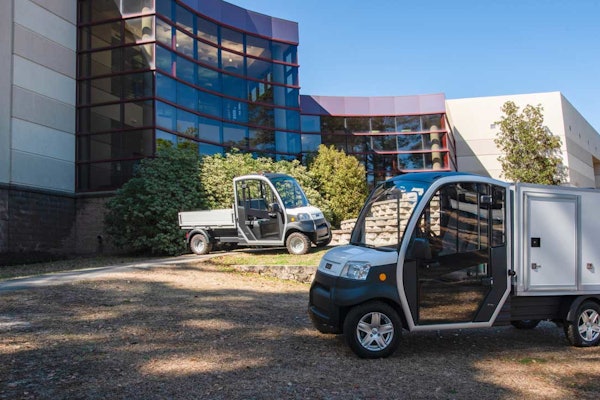With the cooler weather settling in, it’s time to talk to your customers about a good way of enjoying the outdoors even if the temperature has dropped: fire pits.
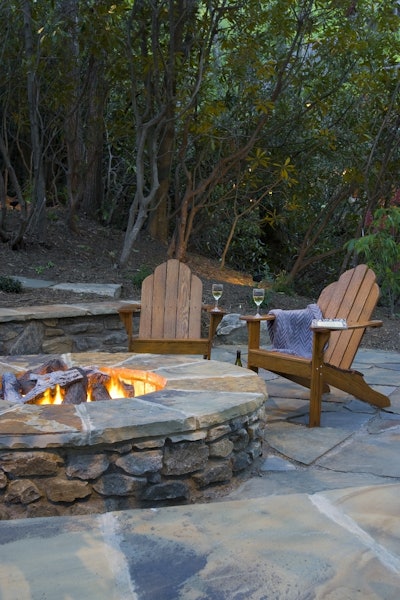 Photo: ACM Design Architects/Flickr
Photo: ACM Design Architects/FlickrWhether your customers will be brushing the dust off their outdoor fire pits and adding in a few accessories to spruce it up or wanting one installed from scratch, the design options are almost limitless.
Outdoor fire pits have become very popular among homeowners in recent years, and what better time of the year to start installing one or adding on to one than right here, right now?
Take a look at a few accessories that can be added to your customer’s outdoor fire pit, and a few options to consider if your customers want to find a clean-air alternative to their traditional wood-burning pit.
Accessories
For your customers who already have and love their outdoor fire pit, talk to them about a few gadgets and gismos that are sure to prolong the life of their fire pit and make their outdoor fireside experience more enjoyable.
Waterproof log storage can come in handy more than customers realize. Whether they live in a rain-prone area or not, random showers can come out of nowhere and completely drench a pit. If your customers do have the traditional wood-burning fire pits, this can spell disaster when they find their entire stock of wood will not light.
With a waterproof log storage cover, customers won’t have to skip out on an evening of fun with the family just because Mother Nature decided to drop a random shower. These covers can also help keep the wood from growing mold and mildew, which in turn keeps the air clear of harmful agents in the smoke.
Safety screens can come in handy for all customers, but especially for those who have small children or mischievous pets. Screens help keep the sparks and open flames contained, and it keeps wandering hands, noses and paws at bay.
Covers are necessary for fire pits because they can help protect them from the elements and prolong their lifespan. Covers can also be used for cosmetic reasons to help tie together the look of the pit.
Cozy evenings around a wood-burning outdoor fire pit can really give your customers the feel that they are camping in the great outdoors without having to leave their backyard.
Along with wood-burning pits are the options of natural gas, wood alternatives and bioethanol for customers opposed to the smoke of a wood-burning pit. Since fire pits do contain, well…fire, it’s best to make sure they are placed on stone, gravel, dirt, concrete or other non-combustible surfaces.
Even though propane, gas or ethanol-based pits will not produce embers, it’s still a good rule of thumb to maintain a 10-foot clearance from the pit to your customer’s home or other surrounding structures, and they should be away from any low-hanging trees.
Natural gas, bioethanol and log alternatives
Fire pits with natural gas have been known to give more ease of operation, and they are one of the most popular picks when it comes to fire pits. Natural gas is fed to the fire pit by a gas line, therefore it will be stationary. Some can be designed with propane, which results in a more portable unit.
Talk to your customer about the types of gatherings they will be hosting, and try to tailor their needs to a particular look and pit type. Fire pits can double as outdoor coffee tables, and built-in seating can serve as an efficient way to accommodate a crowd.
Clean-burning ethanol is not only an option for automobiles; it is also an excellent fuel option substitute for gas or wood logs.
The portability of the bioethanol-based pits gives customers the chance to move their pit around the landscape during events, and it gives them more design options.
If your customers already have a wood-burning pit, but are tired of the smoke and residue that can sometimes accompany it, talk to them about log alternatives.
These alternatives are made of renewable resources that release up to 80 percent fewer emissions than regular wood when burned. This means less carbon monoxide and residue in the air, and less creosote build-up on the walls of the fire pit.
A few options are logs made from soy, switchgrass, used coffee beans, non-petroleum natural wax and recycled sawdust.
For customers who may not really even have a use for a fire pit but like the idea of one, just tell them not to light it. The design and look of a fire pit and seating area is enough to add a great focal point to a yard, and not lighting it will keep your customers from having to deal with finding burnable materials, air residue and cleaning of any kind.

